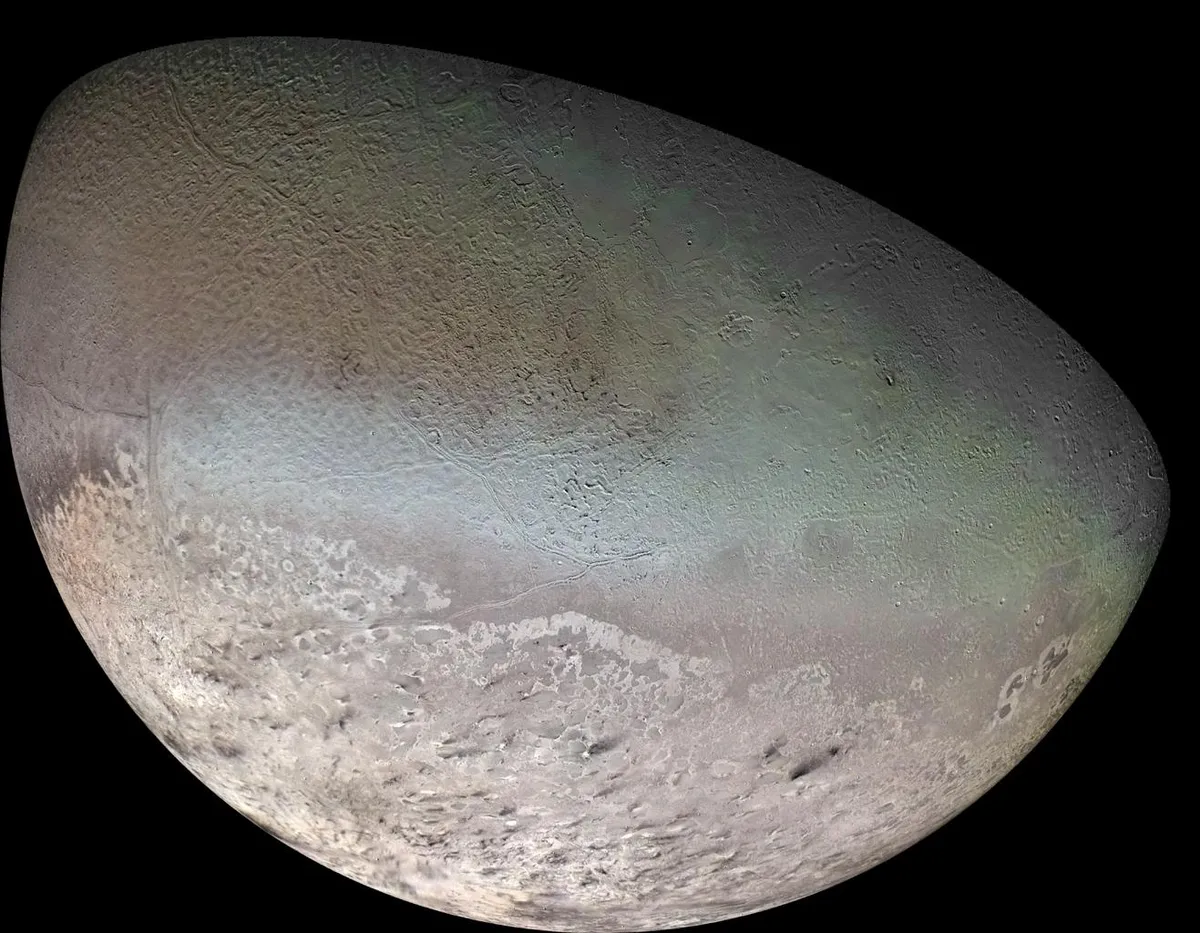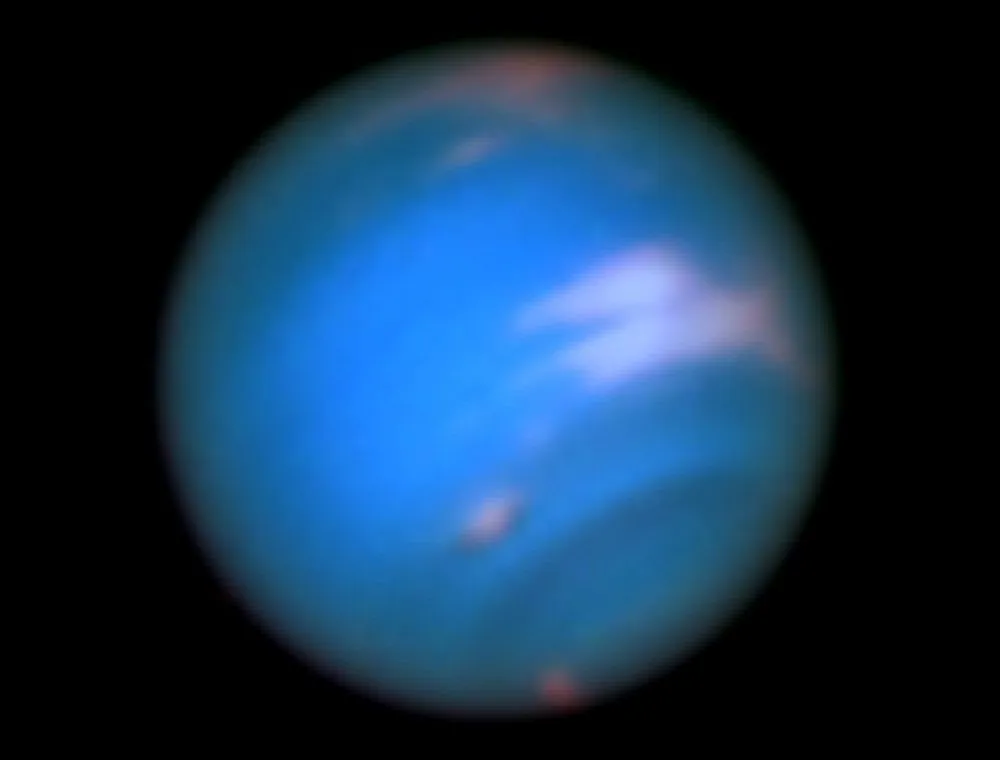What is Neptune like?
As the furthest major planet from the Sun – and so the recipient of the least amount of solar energy – you might expect Neptune to be a relatively sluggish planet.
But when Voyager 2 flew past in 1989, the mission team were astounded to see not only giant storms across the planet’s deep blue atmosphere, but winds that blew up to 2,400km per hour.
That’s 15 times stronger than those found on Earth, and faster than on any other planetary body in the Solar System.
What drives these enormous winds is still a matter of great debate.
It seems the extreme gusts only happen in the top 1,000km of the planet’s atmosphere, meaning it’s unlikely the cause lies with some process occurring deep within the heart of the ice giant.
Instead, it seems some shallow process in the upper layer of the atmosphere is at play, such as turbulence created by the condensation and evaporation of moisture.
It has several icy moons, including Triton.
When Voyager 2 flew past the moon in 1989, the spacecraft discovered plumes of 'smoke' coming up from Triton's surface, created by cryovolcanoes - volcanoes made of ice which erupt water, rather than lava.

Neptune facts
- Diameter: 49,244km (3.87 times Earth)
- Mass: 102 trillion trillion kg (17.1 times Earth)
- Distance from the Sun: 4495 million km
- Length of day: 16.1 hours
- Length of year: 163.7 years
- Number of moons: 14
- Average temperature: -200ºC
- No of spacecraft visitors: 1
- Type of planet: Ice giant
How can I observe Neptune?
Neptune is completely invisible to the naked eye, so you’ll need at least a set of binoculars to find any trace of it.
As Neptune is far more distant, its disc appears smaller in the sky, meaning you’ll require a larger telescope – at least 6 inches in aperture with a 200x magnification.
At these high magnifications, your observations may be affected by seeing, where turbulence in Earth's atmosphere causes the image to shimmer.
Experiment with different eyepieces, Barlow lenses and focal extenders to find the best magnification on any given night.
While a challenge, it is possible to image the disc of Neptune.
How was Neptune discovered?
Neptune was ‘discovered’ before it was ever observed.
Astronomer Urbain Le Verrier noticed that Uranus’s orbit was slightly out of kilter with where it should be, as if something was pulling on it.
The culprit, he proposed, was an eight planet.
In 1846, astronomer Johann Gottfried Galle looked where Le Verrier predicted the planet would be and found Neptune.
From where does Neptune get its name?
Several names were suggested for the new planet that were in keeping with the mythological theme of the other seven, including Janus (the two-faced god of beginnings and transitions) and Oceanus (god of the ocean).
It was Le Verrier who came up with Neptune, after the Roman god of the sea, known as Poseidon in Greek.
How have we explored Neptune?

Only one spacecraft, Voyager 2, has flown past Neptune.
When the probe flew past in 1989 it revealed a deep blue planet, its colour coming from trace amounts of methane in the atmosphere scattering away the red light.
Voyager 2 spotted several large, white storms in the atmosphere, though the highest wind speeds were measured in the Great Dark Spot.
When the planet was imaged with the Hubble Space Telescope in 1994, the Great Dark Spot had vanished, but another black storm had cropped up in the northern atmosphere.
Explored by: Voyager 2 (1989, NASA)
